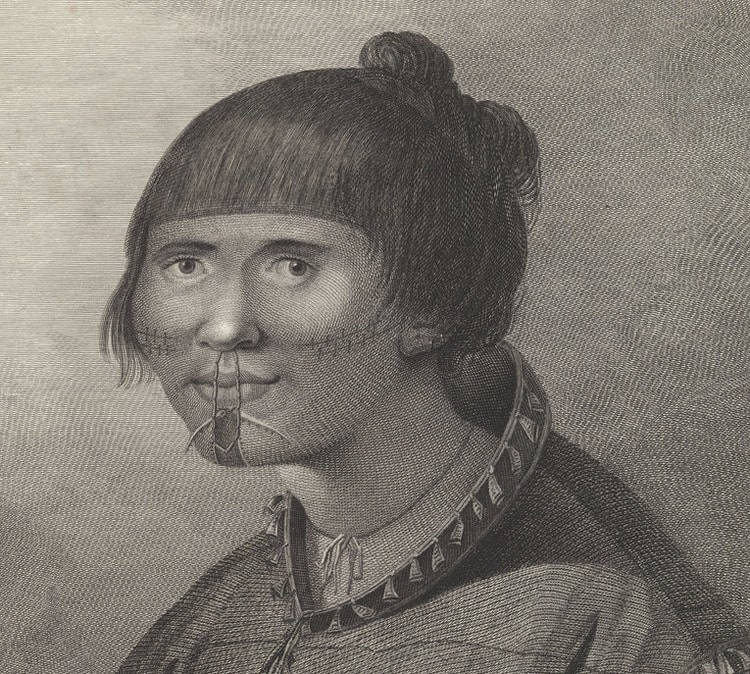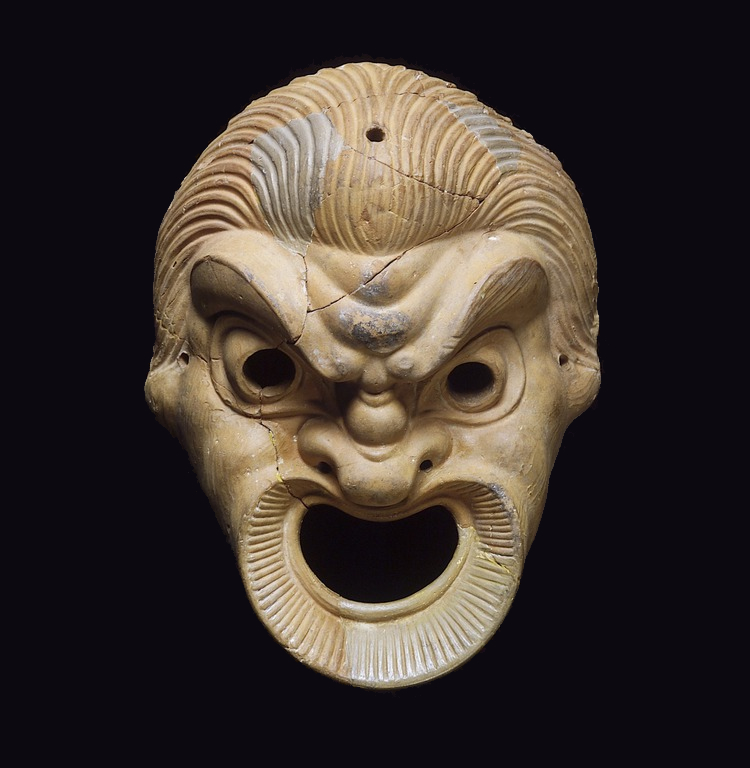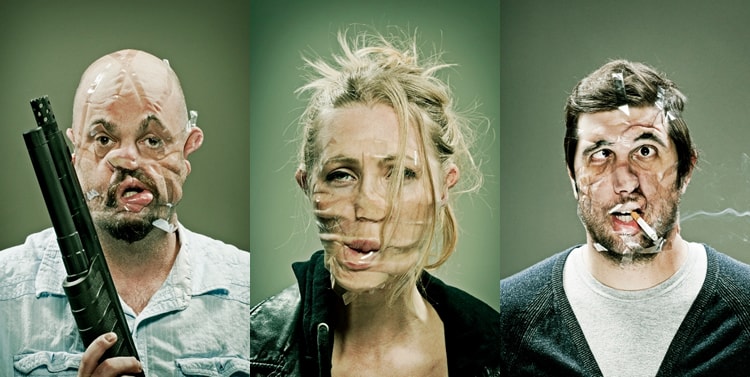Interview With Invisible Tape Series Photographer, Wes Naman
Sometimes the most esoteric of materials can be used to make the most profound observations. A perfect example can be found in photographer Wes Naman’s “Invisible Tape Series”, which explores what happens when the human face is distorted through the application of adhesive tape and the result photographed.
While the concept behind the practice of modification isn’t new, Naman’s project can be viewed as the latest stage in a logical progression that has its origins in our distant past and deep within our psyche’s.

The practice of modifying the human body has been a facet of artistic expression since time immemorial. In particular, facial manipulation, reconfiguration and distortion have enabled us to explore how we present ourselves and are perceived by our peers; to investigate how specific alterations to appearance can change perceptions of character.
Historically, various disciplines within the Arts have provided the means of expression for our fascination with physical appearance. Early civilizations experimented with colour, form and texture, adding naturally occurring elements to adorn the face and body. These modifications mainly took two forms; applications to the skin and insertions beneath its surface. Consequently we see the development of painting, staining and dyeing running in parallel with inking, tattooing and scarification.

An engraved portrait by John Webber of an Aleut woman with tattooed face and linked nose labret, 1779.
Over time, these surface applications and amendments developed into the introduction of the mask; a semi-rigid appliance capable of multiple usages. With the evolution of theatre, the mask became a vehicle through which character was conveyed; with features exaggerated to the point of the grotesque. This technique was used to emphasize the facial features most appropriate to the conveyance of tragedy and comedy.

Terracotta mask; 250 B.C.
This tells us that the concept of appearance being used to help define and transmit character was established early within our civilization. And this is borne out, not only in theatre, but in other art forms. For example, within literature old age, ugliness and imperfection were all represented by blemishes, deformities and disfigurements and more often than not these equate to threat, danger and evilness of character. Consider the physical portrayals of the witch, stepmother and/or evil character in children’s fairy stories and folk tales for example. The wart, wen, hunch, lump and hump are signifiers of bad intentions and potential threat. In Fine art, such notables as Picasso, Dix, Bacon and more recently, Damien Hirst have explored the effects of rearranging human features and the impact this has on their audience.

And until relatively recently, the legacy of deformity provoking voyeuristic fear and curiosity at best, and be associated with malevolence at worst lived on in a variety of forms. Consider popular, mass entertainment vehicles such as melodrama, pantomime, the circus, Victorian freak shows (The Elephant Man) and the “B” movie monster; the audience reacts to Frankenstein’s creature’s appearance, which negates the scientific marvel behind its creation.
Equally, exaggerated facial characteristics were used to suggest humour; embellished smiles, inflated cheeks and amplified eyes all contributed to the upturned lines found in the comedic mask.
Wes Naman’s series of photographs evokes feelings of horror and humour in equal measure. What these images demonstrate is that even minor, subtle changes can provoke diametrically opposed reactions in the viewer. The point Naman makes so eloquently is that what separates the beautiful from the grotesque, the symmetrical from the asymmetrical or the appealing from the repulsive is actually very little.
Consequently, the series provides us with a critical commentary on our media dominated culture, where surgical enhancement is ubiquitous. It may be something of a cliché but beauty – and our pursuit of it – is only skin deep; the flesh may be malleable but the core person beneath remains the same. More worryingly, while we understand this intellectually, our basic fear of what we perceive as abnormality remains; it is innate and Naman’s images force us to confront these basic prejudices.
There is more to this than meets the eye. Wes Naman kindly agreed to be interviewed and we took the opportunity to ask him about this project, his work in general and his approach to photography:
Can you tell us how the idea behind the “Invisible Tape Series” came about?
Actually it came as an afterthought. I had been doing a lot of commercial work at the time and was feeling I needed to just do something artistic. I have a notepad I keep with me at all times for ideas and such and I had written down only “invisible tape series”. I had the idea over a year before I actually shot it and as I was scrolling through my list i saw that entry and said to myself, “Hey, I can do this, really quickly, really cheaply and I can scratch it off my list.” I have always been interested in manipulating faces and bodies with Photoshop and have always been drawn towards cartoons and comic books. These images gave me the opportunity to “deform” faces and the result was fun and funny as well. Everyone involved had a good laugh while we shot.
Are the subjects of your photographs friends and colleagues and how did you persuade them to participate?
Most are friends or colleagues. After the first set was released on Facebook, a lot of people were interested in doing it. Many people in my city are familiar with my work and finding willing subjects is never a hard thing to do.
Were you subjects shocked by the results you achieved?
I wouldn’t say shocked, more hysterical, in the good way. Of course I supplied them with plenty of libations, so we all had fun and it was truly a hilarious evening.
We have to ask, was the removal of the tape traumatic?
Not necessarily traumatic but unpleasant to say the least. My follow-up series with the rubber bands were much more excruciating. However, we did have one gal, who is claustrophobic and maintained the best she could, however I could tell it was hard for her…
What is your background; where did you gain your education and/or experience as a photographer?
I was introduced to photography by my father who is a physicist and did photography as a hobby. After being self-taught for a while I ended up going to Randolph Community College which is a technical college in North Carolina where i was taught the science of photography. It was there that I received my most crucial knowledge of photography. We focused very little on the “artistic” side of photography but rather understanding light, how to manipulate it, and apply that to whatever your subject is whether it be photojournalism, commercial or bio-medical. By learning this information I was able to apply it to my creative side. I was a writer and schooled in such before I got into photography and I feel my photography is an extension of that.
Which artists and/or photographers would you consider to be your main influences?
There are so many but off the top of my head, Joel-Peter Witkin, David LaChapelle, and Dave Hill.
Amongst your contemporaries, whose work do you most admire?
Hands down, Gregory Crewdson. I love his storytelling and set ups. If I had more of a budget, I would love to have that kind of freedom to explore narrative in such a grand way…
Can you give us a breakdown of the type of equipment you use most frequently?
Right now I primarily use my Nikon D600. I use An Octodome for many portraits and side strip lighting. Sometimes I use a beauty dish for fill. Plenty of scrims and flags. Diffusers of all sorts, homemade. Pocket wizards. Battery packs for location shooting. C-stands, gels, etc.
What is likely to be your next big project?
I have a few ideas in the works, but I am hoping to take a humanitarian approach to a certain series I have in mind. I can’t say much on that at the moment because we are just in talks right now. (Once we get the kinks worked out I’ll be sure to let you know! :)
Is there one project that you would really like to tackle in the future?
See above :) Let’s just say it will hopefully be involving the Justice League’s, “We Can Be Heroes” Campaign… fingers crossed. It’s an organization and a movement to help feed Africa.
